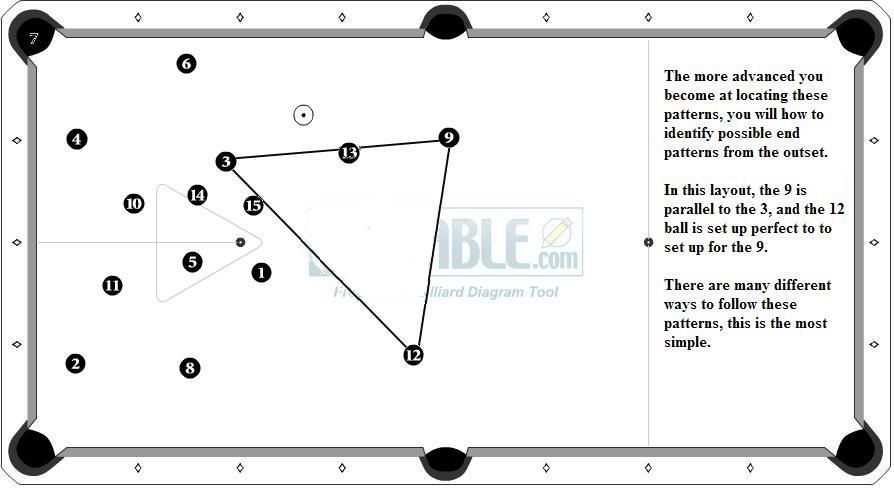Its really hot right now to talk about "looking for triangles" as an end rack sequence. I have read several straight pool books and never seen this mentioned. I have to admit I'm kind of confused about the whole concept. Can someone enlighten me a little more?
Any three balls make a triangle right? As long as they aren't in a line, ok that makes sense - you don't want your last three in a line. Ok, got that.
So I should keep a triangle of three balls for the end. But which triangle?? When I look at a newly broken rack, I can find lots of nice looking triangles with a break ball. Is this helpful?
To me it seems that it is much more useful to find two or more balls that form a stop-shot sequence to get position on the desired break ball. Yes, those last three end up forming a triangle which is great, but that seems like fairly superfluous information.
can someone set me straight on the whole triangle business?
Any three balls make a triangle right? As long as they aren't in a line, ok that makes sense - you don't want your last three in a line. Ok, got that.
So I should keep a triangle of three balls for the end. But which triangle?? When I look at a newly broken rack, I can find lots of nice looking triangles with a break ball. Is this helpful?
To me it seems that it is much more useful to find two or more balls that form a stop-shot sequence to get position on the desired break ball. Yes, those last three end up forming a triangle which is great, but that seems like fairly superfluous information.
can someone set me straight on the whole triangle business?

